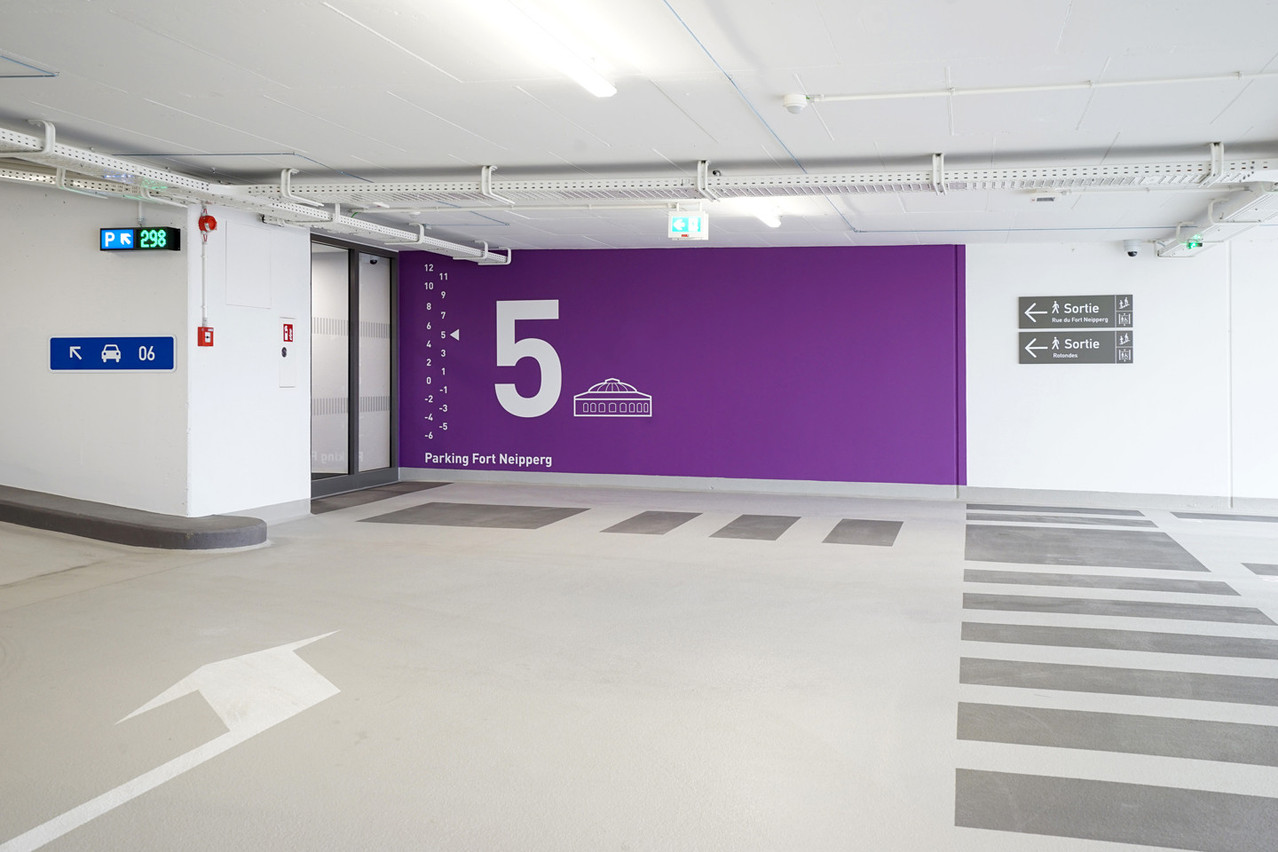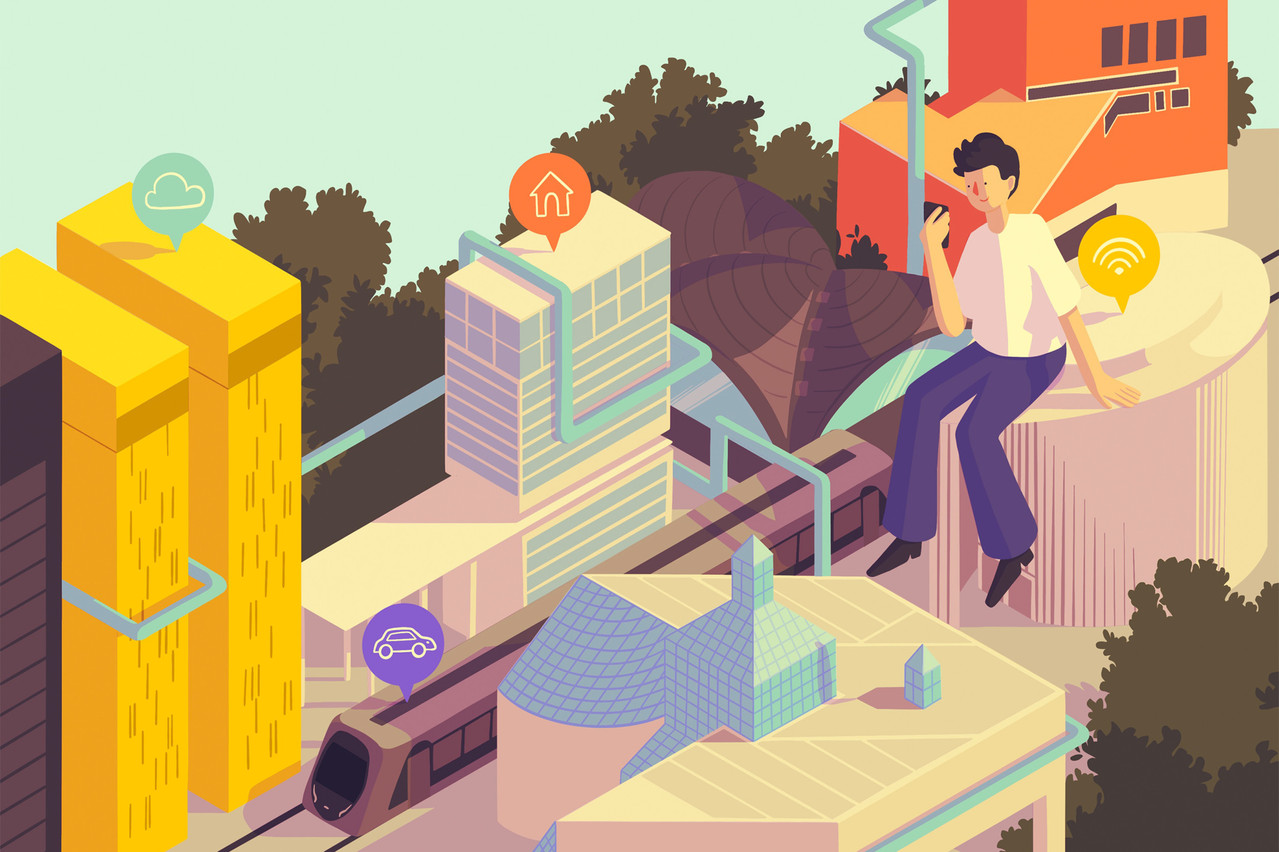In its Smart City Strategy Index (SCSI) 2019, global consulting firm Roland Berger analysed 153 cities worldwide, ranking Vienna as number one. The Austrian capital scored a total 74 points out of 100. London took second place (73 points), while third place (72 points) went to St. Albert, Canada, which has a population comparable to that of Luxembourg City.
Notably absent from the index? Luxembourg City. Or any city in the grand duchy, for that matter.
But the City of Luxembourg (VdL) is currently underway preparing a smart city strategy which would allow it to take part in such indexes in the future. The strategy should be released latest “within the coming months”, according to Luxembourg City first alderman (CSV). With the aid of people like Guy Breden, IT specialist at the VdL, the working group has identified the need for better governance and centralisation when it comes to a smart city strategy.
A variety of verticals
Of course, the City already has plenty of smart infrastructure and technology in place. As Breden notes, “We were the first town in Europe to have wifi, a hotspot for the entire city.” There’s inclusive free transport, with real-time mobility information; smart parking, even smart meters. The VdL has its own smartphone app, and there are more projects on the way.
“In 2020, we did interviews with our 56 departments [to see] which projects are smart, which are in planning, which are executed,” Breden explained. They then reviewed which projects could be interesting for citizens, which fit the budget, etc. As an internal exercise, the team also used the methodology in the Roland Berger index to determine where the City would hypothetically rank, and they scored at 31 points. But the VdL is determined it could reach 45 to 50 points in the short- to mid-term, “perhaps in five years,” according to Wilmes. This would place it above the 41 total average in the SCSI.
“But it’s not all about rankings… people should have a clear added value from this strategy,” Wilmes emphasised. “But it’s important for us to compare ourselves to other cities and see what they’re doing. Then you can learn, challenge yourself and always become better.”
While IT solutions can contribute to making an urban centre more sustainable and efficient, at the heart of the concept of a smart city are citizens and the desire to facilitate their daily lives. Smart cities should be participatory and inclusive.
It’s important for us to compare ourselves to other cities and see what they’re doing. Then you can learn, challenge yourself and always become better
The VdL already regularly organises public consultations to get citizens’ opinions on board. It has also identified various examples on its website of how a city can be smart: infrastructure, people, governance, mobility, environment and living. It will also be among the range of Luxembourg stakeholders that will be present at the Smart City Expo World Congress on 15-17 November in Barcelona, Spain, with this year’s theme being to “showcase the strength and innovative potential of the European smart cities and their goal to achieve climate neutrality”.
Cindy Tereba, director of international affairs at the Luxembourg Chamber of Commerce, has confirmed that the grand duchy’s national pavilion at the congress would include 13 exhibitors. The delegation includes a handful of startups, innovating in such fields as water management, mobility, housing and more.
Blue-green infrastructure
One such startup to attend is WEO, which takes data from space (e.g., satellite images) and, through deep-learning algorithms, provides its clients with maps and derivative information which can improve quality of living. The cities of tomorrow will need smart urban land-use planning, also to deal with climate challenges. That includes the question of how to deal with natural elements--“blue”, referring to rivers and other bodies of water, and “green”, or vegetative landscapes--to fit community needs.
The grand duchy has around 1,800km of hydrographic network, which includes smaller rivers that are susceptible to flooding. Already working with a handful of communes within the grand duchy, co-founders Imeshi Weerasinghe and Charlotte Wirion explained to Delano some of the susceptibility urban areas have when it comes to droughts and flooding, and how to potentially manage that better.
“Trees, in general, are cooling, if they are healthy,” Wirion explained. “Grass is cooling, but as soon as it turns into dry grass, it heats up, sometimes even more than asphalt. That’s a bit the issue here: so then the cool spots in our cities turn into hot spots.”
Imagine a green spot like the Kinnekswiss park, the site of many a funfair, frisbee toss or picnic. A place where people can enjoy the urban outdoors but where grass, of course, gets trampled. Add to this the second hottest summer the grand duchy just experienced. Such places are prone to a vicious cycle--when it does finally rain, Weerasinghe explained, “the water, instead of going through, just runs off and [the grass] gets dryer and dryer.”
On the flip side, when it comes to flooding, projects are already underway to renaturalise the Pétrusse, for example, which is “one step to avoid having a bigger impact [with] flooding”, according to Wirion, although the impact remains to be seen. While WEO technology can aid in water management solutions, many urban green spaces “proportionally have a lot of grass; how it’s planted, compact, not a lot of [water] storage means it’s affected quicker, compared to more natural green spaces outside of urban areas,” Wirion added.
Mobility, shopping and more
Others participants include Savvy Mobility, a mobility on-demand software through the Losch Digital Lab that determines in real-time the best sequence of pickups and drop-offs which could involve different transport types. Fleets could use these as a solution, something intermediary “between a taxi and a bus,” head of mobility Darian Heim explained.
The last challenge is how to mitigate to make it commercially viable… Smart city solutions are still procured on an insufficient scale
But there are challenges for companies when it comes to smart city momentum. As Heim explained, depending on the city, data may or may not be as readily open and available. There’s also the issue of data governance. But ultimately, even if a perfect solution exists for a particular problem, “the last challenge is how to mitigate to make it commercially viable… Smart city solutions are still procured on an insufficient scale.”
For TiQuest CEO Alexandre Marquet, much of his startup’s development has relied on word-of-mouth. TiQuest offers software and hardware that helps digitise shops with paperless receipts, but it also launched a digital menu software during the pandemic which allows for contactless ordering. Sometimes convincing shops isn’t so obvious. “The shop says [e.g.], last month was not good--based on a feeling, not on real data,” said Marquet. But such software could help cities better understand where people are spending money, what traction different shopping areas get versus others. With weather data, you could even see how sun or rain impacts visits to a restaurant.
Smart analog design
But while a smart city tends to bridge tech and design and its citizens, there are other ways a city can be intelligent.
Georges Zigrand is a designer and consultant who has worked on several projects within the city. He runs his own consultancy--as well as a fascinating website, where he shares “observations on the topic of design and the culture of objects”.
One of his consultancy’s concepts and design strategies includes a “comprehensive wayfinding concept” for Kirchberg, which “consists of a family of modules adapted to different urban scales and their context”. Maps, essentially, which help visitors to Kirchberg better orient themselves across the plateau’s wide expanse. The maps place the user at the centre: they aren’t oriented traditionally (north-south, east-west), rather they’re heads-up maps--wayfinding oriented in the direction of travel, more intuitive for the user.

The Fort Neipperg parking floor signage was conceptualised and designed by Georges Zigrand Design Consultancy and Laurent Daubach. Architects WW+ Photo : Georges Zigrand
Another concept Zigrand has worked on is the Fort Neipperg parking floor signage: “We separated the signage system for drivers and pedestrians for clarity and reduced the graphic interventions and colours to a strategic minimum to maximise their effectiveness,” his site explains. Floor information for pedestrians is only at the exit stairs area, “creating an intuitive ‘visual pull’ towards them,” and each floor includes one large number, one solid colour, one illustration. Zigrand explained further: “One of the three you will remember, depending on how you function.”
There’s indeed an explosion of technology and programming, “just because you can, not [necessarily] because it’s better,” the designer argues. One example is questioning a city’s lighting at night. Consider, for example, “if you’d have less lighting in the streets and just on those spots [like zebra crossings] higher lighting where it’s crucial, to emphasise more.” In those places it’s probably necessary: but what about in other locations? Under bridges, inside buildings, etc.? “You have a lot of problems with birds and insects that are disturbed by light pollution,” Zigrand added. And, while he isn’t advocating for a dark city by any means, he does imagine what it could be like in a “city where you can see the stars.”
This article first appeared in the

